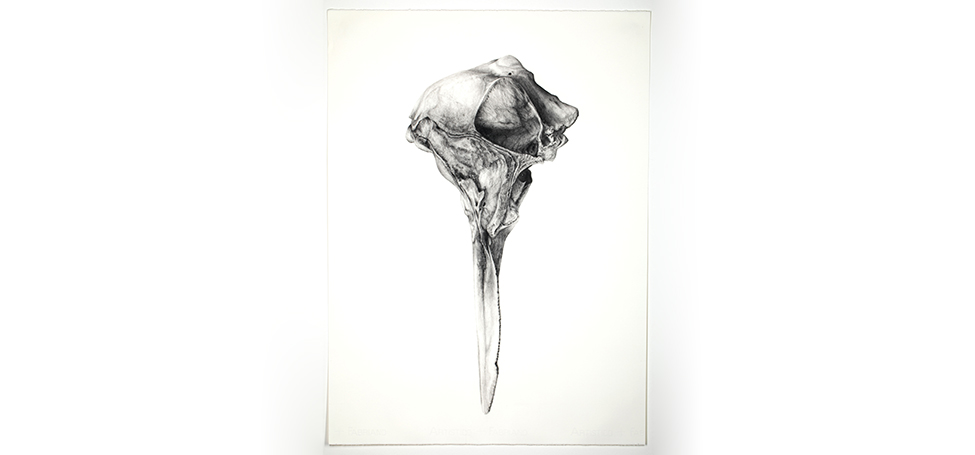
Art and Science Unite
Jackie Brown, professor of biology, and Lesley Wright, director of the Faulconer Gallery, have teamed up to curate an exhibition that explores the relationship between visual art and biology. On display at the Faulconer Gallery until June 10, Making Life Visible: Art, Biology, and Visualization takes its inspiration from Brown’s research with former student Idelle Cooper ’01 on Hawaiian damselfly color. Both the research and the exhibition are funded, in part, through a National Science Foundation (NSF) grant awarded to Brown and Cooper.
“Every NSF grant is evaluated in terms of both its intellectual impact and its broader impact,” says Brown. When he and Cooper applied for funding for their damselfly research, they thought carefully about how they could engage the community with their work.
Cooper, who double-majored in art and biology at Grinnell, suggested that the grant could be the perfect opportunity to showcase how artistic practice and biological research intersect. Currently an assistant professor of biology at James Madison University, Cooper frequently uses her own art to visualize her research; drawings from her postdoctoral work on sticklebacks and previous research with Brown are included in the exhibition. Brown and Wright also saw a chance for the exhibition to build on their history of collaborative teaching about the history and potential of the art/science interface.
When designing Making Life Visible, Wright and Brown wanted to ensure they represented a broad range of biological inquiry in various artistic mediums. To this end, they enlisted the help of Julia Shangguan ’18, a studio art and biology double major, to research potential artists for the exhibition. Shangguan also participated in Brown’s Hawaiian damselfly research (see “The Essence of Inquiry,” Spring 2016, Page 25). “It was exciting — and reassuring — to see that many individuals already recognize the beauty of an arts and sciences union,” Shangguan says.
With the help of Rita Clark ’18, Wright and Brown settled on 16 contemporary artists and scientists, with pieces ranging from Dutch portrait-style photographs of insects to charcoal sketches of bones to neurons micro-etched in gold. The exhibition also includes works from naturalists of the 16th–19th centuries, putting the connection between art and science in its historical context.
“In the past, artists were often trained in observation, and scientists were trained in drawing, because they had no other way to record what they saw,” says Wright. How naturalists chose to represent their subjects could influence how those subjects were perceived.
Along with being a great opportunity for an alum, biology professor, art curator, and current students to work together on their shared interests across disciplines, Making Life Visible challenges gallery-goers to see something as humble as a honeycomb in a new light and question the divide between art and science that many take for granted.
Artwork courtesy of the artist, Tara Shukla, Skull, 2016, charcoal on paper, 30 x 22 inches.
